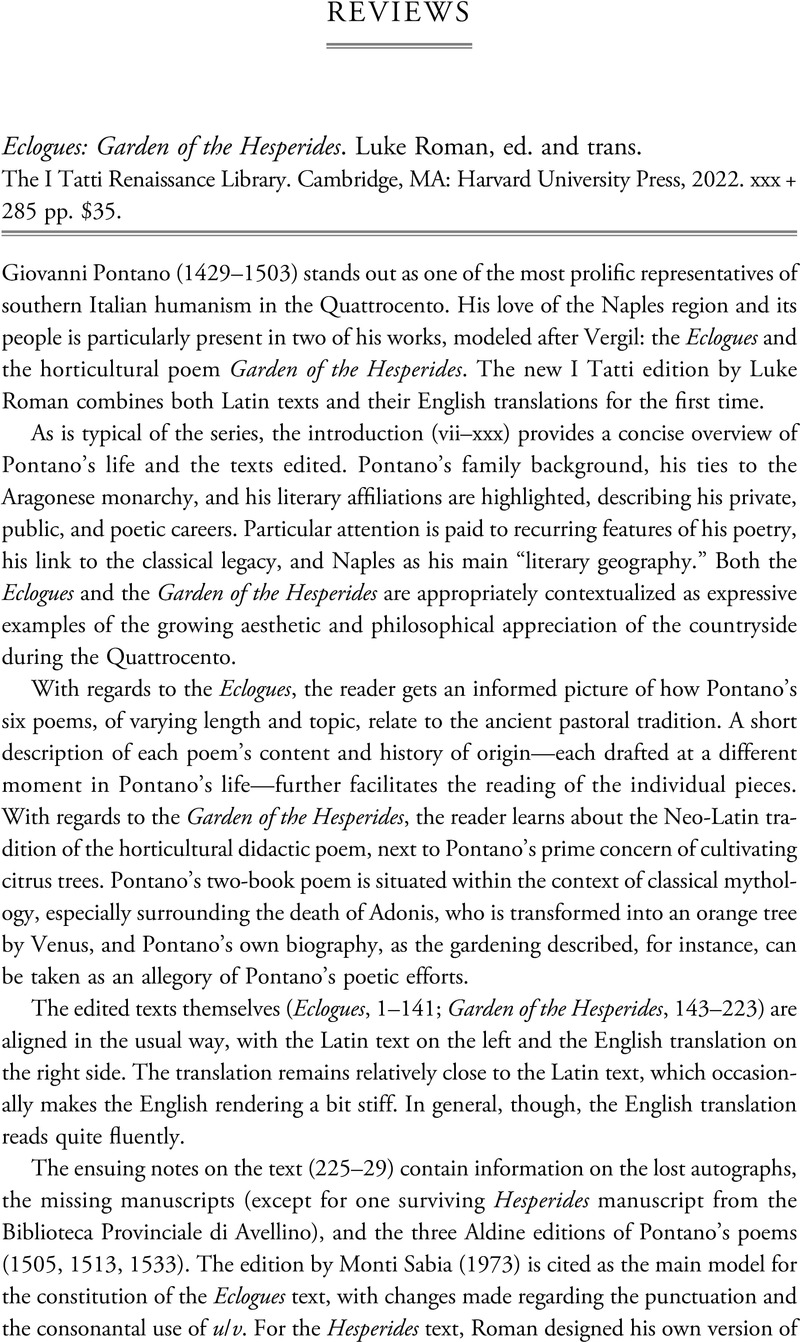No CrossRef data available.
Article contents
Eclogues: Garden of the Hesperides. Luke Roman, ed. and trans. The I Tatti Renaissance Library. Cambridge, MA: Harvard University Press, 2022. xxx + 285 pp. $35.
Review products
Eclogues: Garden of the Hesperides. Luke Roman, ed. and trans. The I Tatti Renaissance Library. Cambridge, MA: Harvard University Press, 2022. xxx + 285 pp. $35.
Published online by Cambridge University Press: 11 November 2024
Abstract
An abstract is not available for this content so a preview has been provided. Please use the Get access link above for information on how to access this content.

- Type
- Review
- Information
- Copyright
- Copyright © The Author(s), 2024. Published by Cambridge University Press on behalf of Renaissance Society of America



